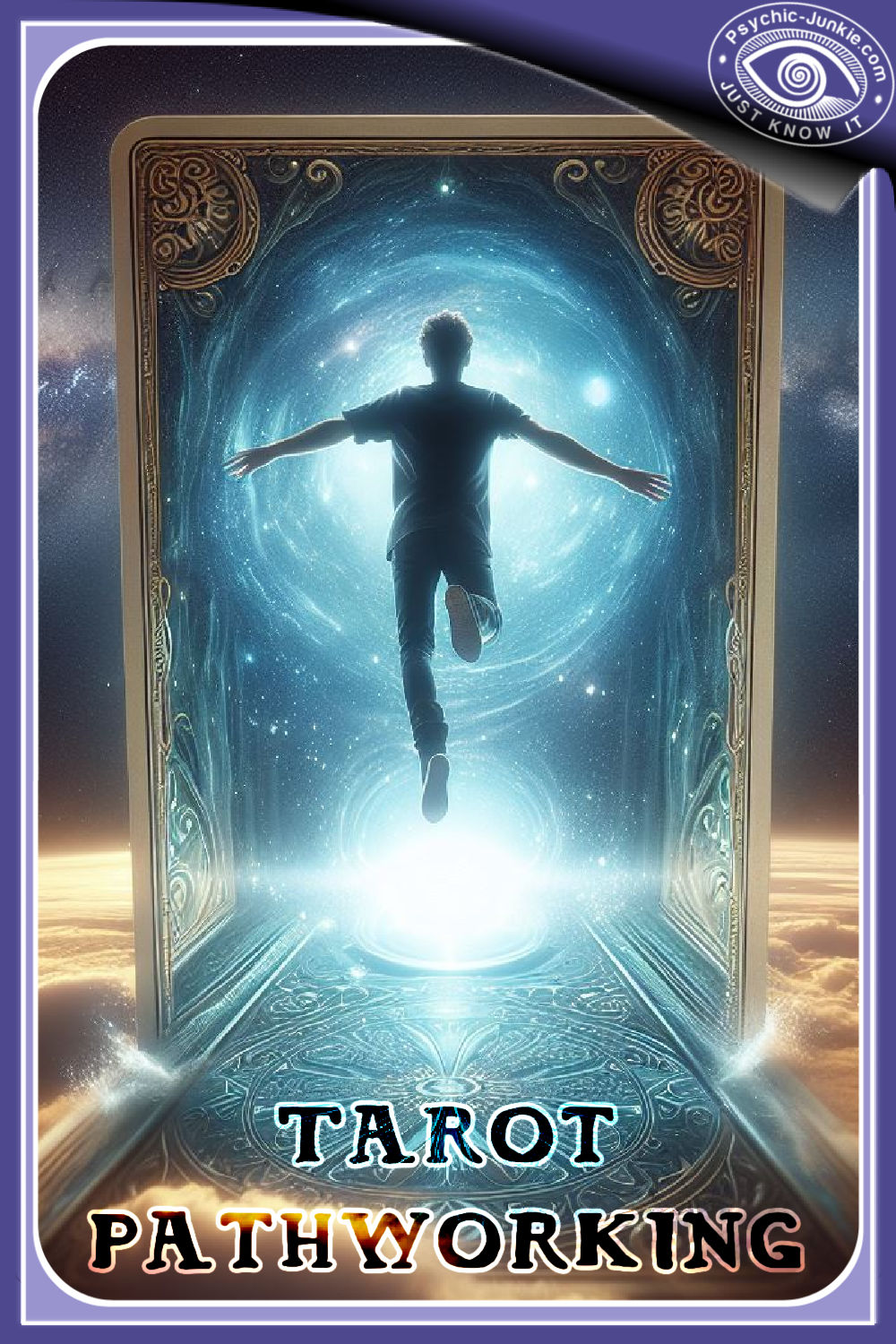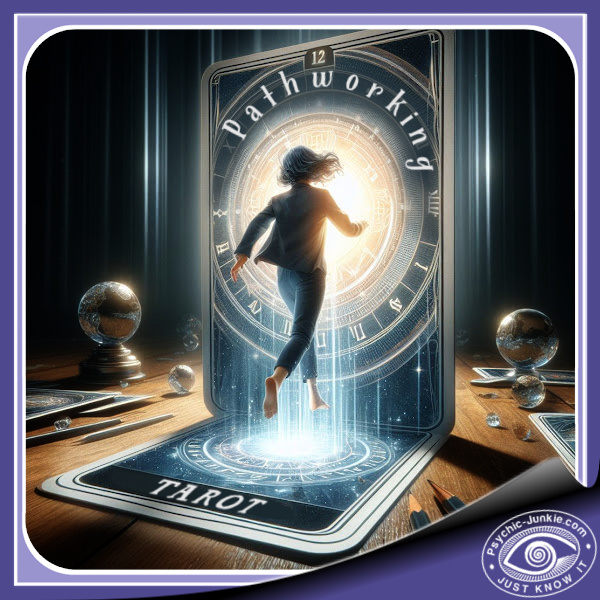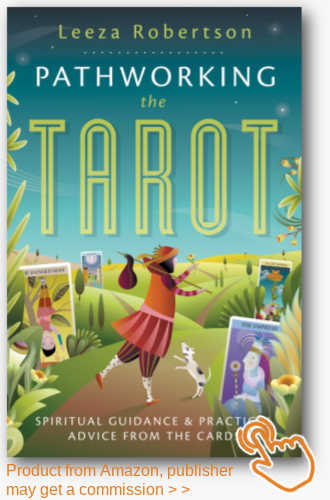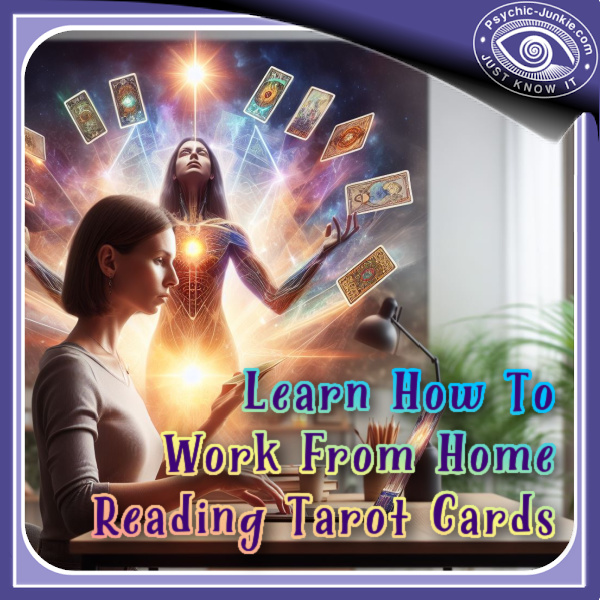- Home
- Tarot Articles
- Tarot Pathworking
Ian Parkin is the author of this post.
A Tarot Pathworking Meditation For Morphing You Into The Cards
Practicing a tarot pathworking meditation to imagine going within your cards, exploring their landscapes and inhabitants, is a spiritual exercise used by mystics of old.
One of the most popular tools for divination and self-improvement, the Tarot deck is now, possibly more than ever, at the zenith of popularity, a veritable golden age, with new, fascinating decks being created and published on a weekly basis.
More people are utilizing this system as it was intended to be used but also discovering endless new ways to explore it. In addition to spiritual guidance, divination, and fortune-telling, tarot cards are becoming a tool for practical advice, ceremonial magic, as an aid in astral projection, and spell-work.
A fascinating way to put your deck to good use is to make them a tool for what the Hermetic magicians of old referred to as pathworking - a combination of using tarot and guided meditation that relies on the alpha state of mind in exploring the subconscious and the hidden world beyond it. I’ve been diving deep into my cards for a couple of decades now.
Journey Through The Major Arcana In A Tarot Pathworking Meditation
This process of pathworking the tarot starts just like any other form of individual spiritual practice - in peace and quiet, away from distractions, with preparatory cleansing and breathing exercises followed by sharp focus on the task at hand. The goal is to transfer one's consciousness outside of the physical body and into the chosen card, to "enter" it using your astral frame. Just like regular astral travel or past life regression, it takes a bit of practice, but it is an attainable goal.
When pathworking the tarot it is best to go through the major arcana at first. Be sure to fully concentrate on your chosen card and do your very best to memorize every detail and hold it firmly in your mind's eye.
Begin by getting into a comfortable seated position, with your spine straight but relaxed. Take a few deep breaths, inhaling through your nose and exhaling slowly through your mouth. With each exhale, feel your body relaxing more deeply.
Once you have selected your card, close your eyes and visualize the card. Repeat the exercise a few times until you are sure you have its image firmly engraved in your consciousness. Next, imagine the card getting bigger and bigger, until the figures in it appear life-size.
To enter the picture begin envisioning the scene on the tarot card coming to life. Imagine the background becoming more vivid and 3-dimensional, and imagine yourself stepping right into it. Notice any sounds, smells or sensations that accompany this imagined environment. Look around and take in the full experience through all your senses. What does the ground feel like beneath your feet? Is there a breeze against your skin? Explore this world as if you were truly there.
As most cards are populated by characters - people as well as animals - of one kind or another, try to communicate with some of them. See their different interactions as a story unfolding before your eyes. To find help ask them questions. Sometimes, you might be guided by deep messages filled with ancient wisdom. On another occasion, a mere joke or a trick will be played on you. Not everything has to be as serious as you expect it to be. Some cards (especially those of the Major Arcana) possess deep archetypal energies. Others (such as certain pips of the Minor Arcana) may seem to be populated by cheeky astral spirits. Approach each situation with an open mind and without judgement. Absorb everything.
You can also choose to see yourself as one of the figures in the card, to become that person or that archetype. Don't be afraid to go deeper and explore further. Just like astral projection, getting out of any situation is the easiest part. See each tarot card as a guide with a lot of wisdom to offer.
Spend as much time as you need in this guided visualization, taking it all in with curiosity and a sense of wonder. When you feel ready, begin slowly returning your awareness to your seated position. Take some deep breaths and gently open your eyes.
Reflect on any messages, symbols or feelings that emerged during your immersive journey into the tarot imagery. Allow yourself to receive any insights that are meaningful to you. This experience was a creative opening for you to imaginatively engage with the archetypes and symbology of the tarot through deep visualization.
Return to your tarot pathworking meditation practice from time to time, see and hear what spiritual guidance and practical advice from the cards you receive, take notes, keep a journal, and continue learning.
Pathworking the Tarot: Spiritual Guidance & Practical Advice from the Cards - by Leeza Robertson
Just as using a tarot deck is a journey through a story, so is pathworking a journey through an inner landscape to find higher awareness and spiritual growth. This practical book's approach to pathworking will deepen your connection to the cards and encourage you to evolve spiritually. As you pathwork through the deck, you'll learn how to meditate on your readings and uncover so much more than you thought you could.
Leeza Robertson introduces you to three pathworking styles: intentional (intentionally selecting cards based on theme), intuitive (letting the cards guide you), and wandering (combining a little of both the intentional and intuitive styles). Using straightforward techniques and hands-on exercises, she guides you through the seventy-eight cards and the stories they tell. This remarkable book inspires you to go further, deeper, and wider with your tarot practice and find spiritual enlightenment through new experiences with your deck.
Wiki - Esoteric Tarot
- Home
- Tarot Articles
- Tarot Pathworking










